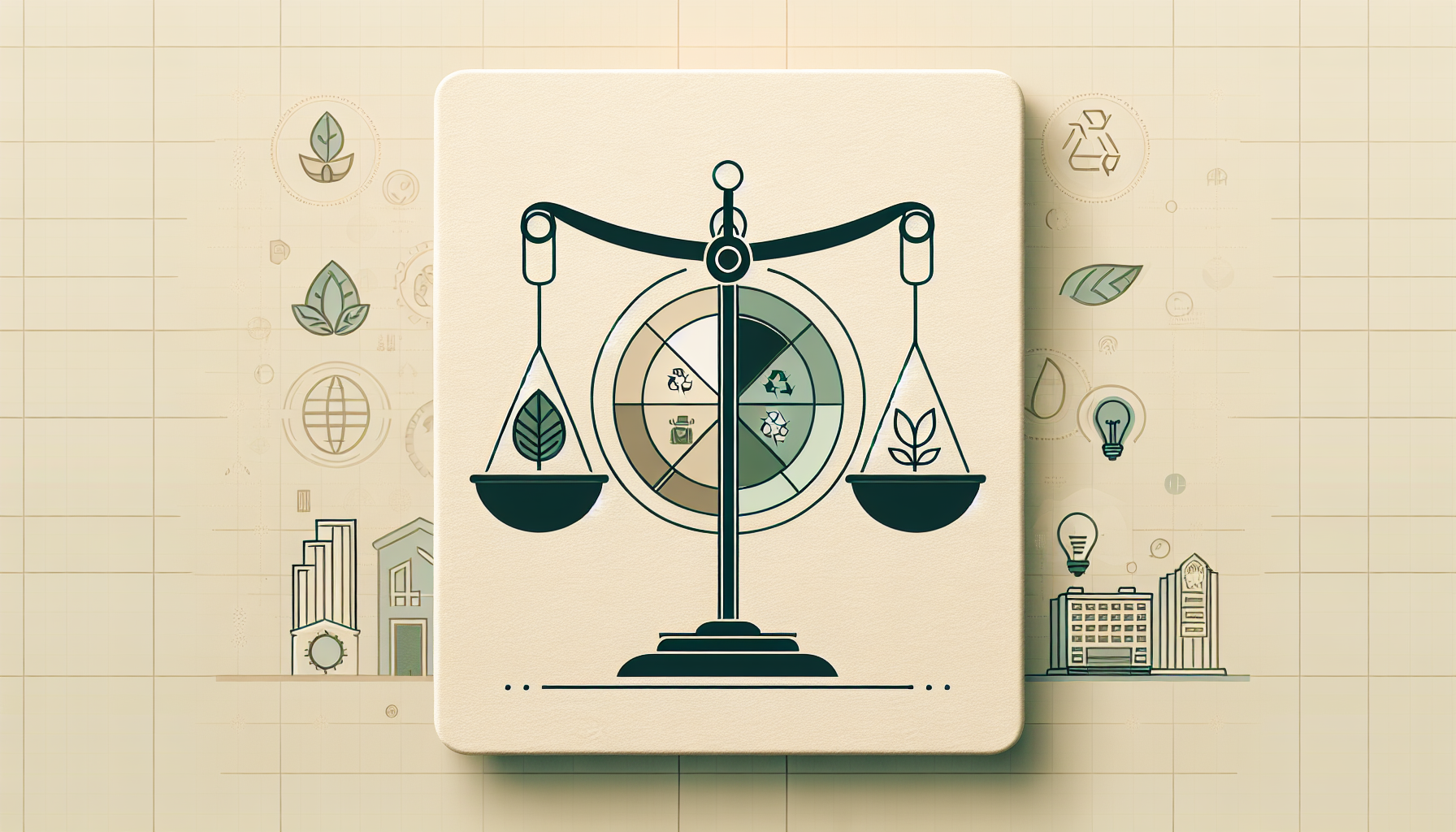Sustainability benchmarking can feel overwhelming, right? With so many metrics and factors to consider, it’s easy to get lost in the details and not know where to start. You’re not alone in seeking a clearer path to making your organization’s sustainability efforts more effective!
But what if I told you that there’s a way to simplify this process and make it more engaging? By using ChatGPT, you can craft tailored prompts that help you set meaningful benchmarks and track your progress with ease. Stick with me, and I’ll show you how!
We’ll explore effective prompts, key metrics, and real-world examples that can transform your sustainability strategy. Whether you’re in manufacturing, retail, or any other industry, there’s something here for you! Let’s dive in!
Key Takeaways
- Use effective prompts with ChatGPT to simplify sustainability benchmarking for your organization.
- Identify specific sustainability goals to guide your prompts, like reducing waste or improving energy efficiency.
- Focus on key metrics such as waste reduction, carbon footprint, and energy efficiency for thorough assessment.
- Tailor your prompts to fit the unique challenges of different industries for better insights.
- Utilize specific examples and action plans to set and achieve realistic sustainability targets.
- Regularly assess and refine your sustainability strategies based on data-driven recommendations from ChatGPT.

Effective Prompts for Sustainability Benchmarking with ChatGPT
Using clear and effective prompts when working with ChatGPT can significantly streamline your sustainability benchmarking process.
Here are some prompts you can try:
- “Generate a list of sustainability metrics suitable for a manufacturing company.”
- “Provide insights on measuring carbon emissions in supply chains.”
- “What are some effective strategies for improving energy efficiency in a small business?”
- “List the key performance indicators (KPIs) for sustainability reporting in the retail sector.”
These prompts can help you generate useful data and insights, making it easier to assess your sustainability initiatives.
How to Use ChatGPT for Sustainability Benchmarking
To effectively use ChatGPT for sustainability benchmarking, start by defining what you want to achieve.
Follow this step-by-step guide:
- Identify specific sustainability goals relevant to your operations, such as reducing waste or improving energy use.
- Craft prompts that are precise and targeted. For example: “Suggest ways to reduce water usage in our manufacturing process.”
- Use ChatGPT to analyze your current practices by asking for benchmarks against industry standards, like: “What are the benchmarks for waste reduction in the food industry?”
- Request recommendations for improvement: “What best practices can we implement to achieve net-zero emissions?”
This approach not only facilitates data gathering but also assists in strategic planning for sustainable development goals.
Key Metrics for Sustainability Benchmarking Prompts
When performing sustainability benchmarking, it’s essential to focus on critical metrics.
Here are key metrics you can include in your prompts:
- “What are effective waste reduction metrics for a manufacturing facility?”
- “Provide guidance on calculating the carbon footprint for our logistics operations.”
- “List energy efficiency indicators to track in our office building.”
- “How can we benchmark water usage against industry standards?”
Using these metrics will help you track and assess your sustainability performance effectively.
Creating a Sustainability Benchmarking Report with ChatGPT
To create a comprehensive sustainability benchmarking report using ChatGPT, start by gathering relevant data.
Follow these steps to create an informative report:
- Outline the structure of your report, including sections like introduction, methodology, findings, and recommendations.
- Input prompts such as: “Generate an introduction for a sustainability benchmarking report focusing on energy efficiency.”
- Ask ChatGPT for data analysis: “Summarize our energy consumption data relative to industry benchmarks.”
- Request visualizations: “Create a chart comparing our waste generation over the last three years.”
Utilizing AI in this way can enhance your report’s depth and clarity.

Tailoring Prompts for Different Industries in Sustainability Benchmarking
Not all industries are created equal when it comes to sustainability challenges and opportunities.
Tailoring your prompts for specific industries can yield more relevant insights.
For example, use the following prompts to target the unique needs of various sectors:
- “List sustainability metrics pertinent to the hospitality industry.”
- “What are the most crucial environmental considerations for construction projects?”
- “Suggest ways for the agriculture sector to improve water conservation practices.”
- “Identify KPIs to assess sustainability in the tech industry.”
- “Provide industry-specific strategies for reducing waste in retail.”
Adjusting your approach based on sector-specific challenges can lead to better benchmarking results.
Examples of Specific Prompts for Sustainability Goals
Having specific examples can jumpstart your efforts in setting and achieving sustainability goals.
Here are some ready-to-use prompts to guide your sustainability initiatives:
- “Outline a plan to achieve a 20% reduction in carbon emissions over the next five years.”
- “What are actionable steps to improve recycling rates in an office environment?”
- “Suggest ways to integrate renewable energy sources into our existing operations.”
- “Identify best practices for sustainable sourcing in the fashion industry.”
- “How can we enhance community engagement for our sustainability projects?”
These examples give you a clear direction to follow for various sustainability targets.
Improving Your Sustainability Strategy Using ChatGPT Prompts
ChatGPT can be a valuable tool for refining your sustainability strategies.
Consider using these prompts to strengthen your approach:
- “Analyze our current sustainability strategy and suggest areas for improvement.”
- “What innovative practices can we adopt to enhance resource efficiency?”
- “Provide examples of successful sustainability initiatives from industry leaders.”
- “List potential barriers to achieving our sustainability goals and how to overcome them.”
- “What metrics should we track to measure the success of our sustainability efforts?”
Leveraging these prompts encourages continual assessment and alignment with your sustainability vision.
Common Challenges in Sustainability Benchmarking and How to Address Them with Prompts
Sustainability benchmarking is not always smooth sailing; there are common challenges you may face.
Here are some prompts to help tackle these issues:
- “What are the common data gaps in sustainability reporting, and how can we address them?”
- “Identify the most frequent discrepancies in benchmarking data and suggest solutions.”
- “Provide methods to improve stakeholder engagement in the benchmarking process.”
- “List common pitfalls in sustainability strategy implementation and how to avoid them.”
- “How can we ensure the accuracy and relevance of our benchmarking data?”
Using these prompts can guide you in overcoming obstacles and achieving more accurate benchmarks.

Future Trends in Sustainability Benchmarking Prompts
Looking ahead, sustainability benchmarking is likely to evolve with technological advancements and societal shifts.
One of the key trends is the increasing integration of AI and machine learning to generate more accurate benchmarks.
To explore this, you can use prompts like: “What future technologies can enhance sustainability benchmarking methods?”
Data granularity will also improve, allowing for more detailed insights into specific areas of sustainability.
For instance, try: “Identify emerging trends in data collection for sustainability metrics.”
Anticipate a shift towards holistic approaches that consider social, economic, and environmental factors in benchmarking.
Use prompts such as: “Discuss the holistic sustainability practices gaining traction in the next decade.”
As consumer preferences evolve, businesses will increasingly focus on transparency and accountability in their sustainability efforts.
Ask ChatGPT: “How can companies enhance transparency in their sustainability actions?”
Stay ahead of the curve by regularly checking in on these trends using targeted prompts.
FAQs
Effective prompts include specific metrics, context about your industry, and clear goals. For example, ask ChatGPT for ways to measure carbon footprint reduction or evaluate supply chain sustainability.
ChatGPT can generate structured reports by summarizing data, analyzing trends, and providing recommendations based on industry benchmarks. Input specific data points and objectives for tailored insights.
Common challenges include data inconsistency and lack of clarity in goals. Tailored prompts can help clarify objectives, standardize data requests, and identify relevant metrics to streamline benchmarking processes.
To tailor prompts, include industry-specific challenges and goals. For example, focus on waste management in manufacturing or energy efficiency in tech, ensuring relevance to each sector’s sustainability initiatives.
